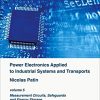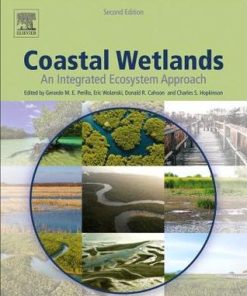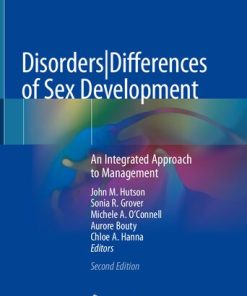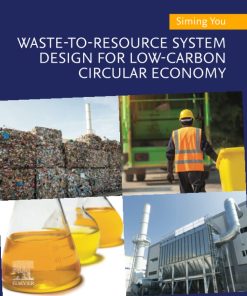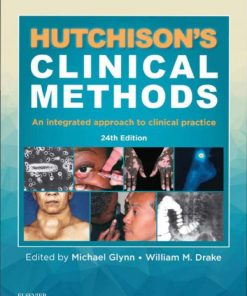Delivering Low Carbon Biofuels with Bioproduct Recovery An Integrated Approach to Commercializing Bioelectrochemical Systems 1st edition by Lakhveer Singh, Durga Madhab Mahapatra 0128218533 9780128218532
$50.00 Original price was: $50.00.$25.00Current price is: $25.00.
Delivering Low-Carbon Biofuels with Bioproduct Recovery: An Integrated Approach to Commercializing Bioelectrochemical Systems 1st edition by Lakhveer Singh, Durga Madhab Mahapatra – Ebook PDF Instant Download/DeliveryISBN: 0128218533, 9780128218532
Full download Delivering Low-Carbon Biofuels with Bioproduct Recovery: An Integrated Approach to Commercializing Bioelectrochemical Systems 1st edition after payment.
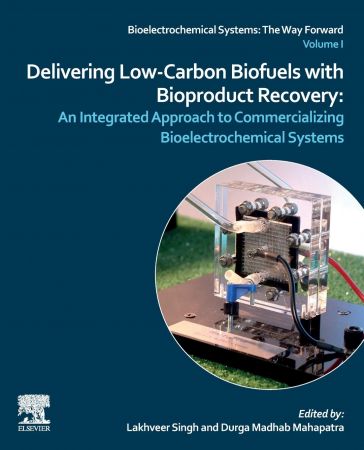
Product details:
ISBN-10 : 0128218533
ISBN-13 : 9780128218532
Author : Lakhveer Singh, Durga Madhab Mahapatra
Delivering Low-Carbon Biofuels with Bioproduct Recovery: An Integrated Approach to Commercializing Bioelectrochemical Systems explores current pathways to produce both the bioenergy from bioelectroactive fuel cells (BEFC) and their valuable byproducts using bioelectrochemical systems (BES) approaches. The book focuses on key methods, current designs and established variants of biofuels processing approaches, also including case studies. Chapters review crucial aspects of bioreactor design methodologies, operating principles, bioreactor susceptibility and systems constraints. The book supports vulnerability and hotspot detection through simulation and modeling approaches. Concluding chapters establish drivers for realizable scale-up and commercialization of bioelectrochemical systems.
Delivering Low-Carbon Biofuels with Bioproduct Recovery: An Integrated Approach to Commercializing Bioelectrochemical Systems 1st Table of contents:
Chapter 1. Electrical energy produced by microbial fuel cells using wastewater to power a network of smart sensors
Abstract
1.1 Introduction
1.2 Microbial fuel cells
1.3 Energy production, regulation and storage
1.4 Smart sensor structure and operation
1.5 Conclusions
Acknowledgments
References
Chapter 2. Application of bioelectrochemical systems in wastewater treatment and hydrogen production
Abstract
2.1 Introduction
2.2 MEC fundamentals and working principles
2.3 Electron transfer mechanism
2.4 MEC technology in hydrogen production using wastewater
2.5 Agro wastewater
2.6 Domestic waste water
2.7 Industrial wastewater
2.8 Fermentation effluent
2.9 Nutrient and heavy metals removals in MEC
2.10 Integrated MEC approach
2.11 Conclusions
Acknowledgments
References
Chapter 3. Nutrient removal and recovery in bioelectrochemical systems
Abstract
3.1 Introduction
3.2 Nitrogen removal and recovery
3.3 Phosphorus removal and recovery
3.4 Conclusion and future perspectives
References
Chapter 4. Role of bioelectrochemical systems for bioremediation of wastewaters and bioenergy production
Abstract
4.1 Introduction
4.2 Principle of bioelectrochemical systems
4.3 Kinds of bioelectrochemical systems
4.4 Role of bioelectrochemical systems in remediation of pollutants
4.5 Sustainability of the technology
4.6 Scaling up of the technology
4.7 Conclusion
Acknowledgments
References
Chapter 5. Energy generation from fish-processing waste using microbial fuel cells
Abstract
5.1 Introduction
5.2 National Green Technology Policy
5.3 Microbial fuel cell system
5.4 Treatment methodology of fish-waste using microbial fuel cell (a Malaysian case study)
5.5 Results observation
5.6 Conclusion
References
Chapter 6. Microbial electrosynthesis: Recovery of high-value volatile fatty acids from CO2
Abstract
6.1 Introduction
6.2 Basic principle of microbial electrosynthesis cell
6.3 Factors affecting product titer
6.4 Strategies to improve product titer
6.5 Economic evaluation
6.6 Future scope of work
6.7 Conclusion
References
Chapter 7. Low carbon fuels and electro-biocommodities
Abstract
7.1 Introduction
7.2 Working mechanism of bioelectrochemical systems
7.3 Application of microbial electrochemical technologies in wastewater treatment
7.4 Electro-biocommodities and value-added biochemical’s production
7.5 Recent progress for electro-biocommodities generation in a bioelectrochemical system
7.6 Conclusion
Acknowledgment
References
Chapter 8. Potential of high energy compounds: Biohythane production
Abstract
8.1 Introduction
8.2 Main aspects of the biohythane generation in bioelectrochemical system
8.3 Substrate for biohythane generation
8.4 Recent progress for biohythane generation in bioelectrochemical system
8.5 Use of biohythane
8.6 Future prospects and concluding remarks
Acknowledgment
References
Chapter 9. Biological and chemical remediation of treated wood residues
Abstract
9.1 Introduction
9.2 Environmental risks of treated wood
9.3 Remediation and recovery of treated wood
9.4 Concluding remarks
References
Chapter 10. An overview on degradation kinetics of organic dyes by photocatalysis using nanostructured electrocatalyst
Abstract
10.1 Introduction
10.2 Organic dyes
10.3 Classification of organic dyes
10.4 Methods for the removal of pollutants
10.5 Advanced oxidation processes
10.6 Photocatalysis
10.7 Photocatalysts
10.8 Photocatalyst surface modifications
10.9 Kinetics of photocatalytic degradation
10.10 Photocatalytic reaction parameters
10.11 Photocatalytic activity of nonmetals and metalloids supported nanophotocatalyst
10.12 Photocatalytic activity of polymer supported nanophotocatalyst
10.13 Conclusions
People also search for Delivering Low-Carbon Biofuels with Bioproduct Recovery: An Integrated Approach to Commercializing Bioelectrochemical Systems 1st:
biofuel carbon
e biofuels
low-carbon fuel standard
how do biofuels reduce carbon emissions
how can biofuels reduce carbon emissions
Tags: Delivering, Low Carbon, Bioproduct Recovery, Integrated Approach, Commercializing, Bioelectrochemical Systems, Lakhveer Singh, Durga Madhab Mahapatra
You may also like…
Biology and other natural sciences - Ecology
Coastal Wetlands: An Integrated Ecosystem Approach Gerardo Perillo
Business & Economics - Management & Leadership
Strategic Management: Theory: An Integrated Approach 12th Edition Charles W.L. Hill
Engineering - Environmental
Waste-to-Resource System Design for Low-Carbon Circular Economy by Siming You
Medicine - Cardiology
Medicine - Clinical Medicine
Hutchison’s Clinical Methods: An Integrated Approach to Clinical Practice 24th Edition
Uncategorized
Stuttering: An Integrated Approach to its Nature and Treatment 4th Edition, (Ebook PDF)


